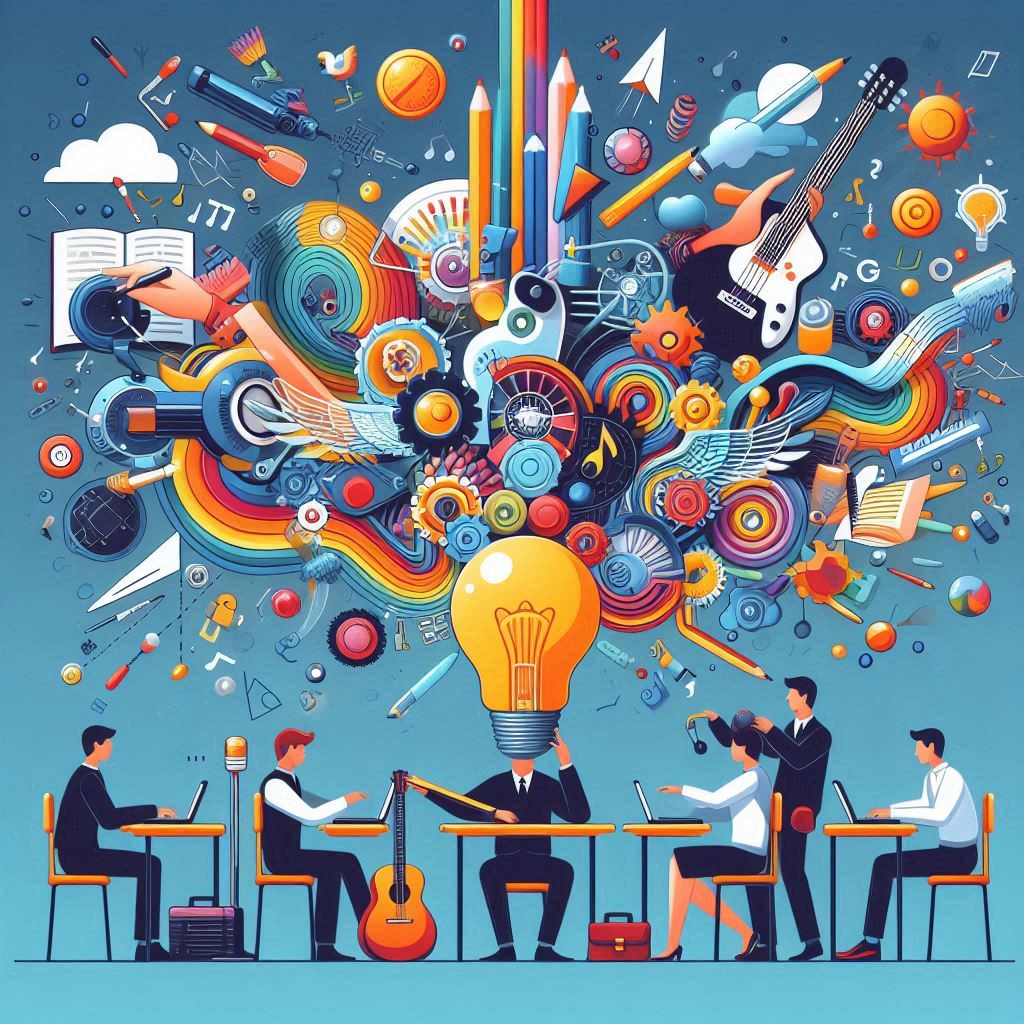Introduction
In an ever-evolving world, creativity has become a critical skill for personal and professional success. One effective way to boost creativity is through learning multiple disciplines. This article explores how interdisciplinary learning enhances creativity, providing cognitive and practical benefits that foster innovation and problem-solving.
Understanding Creativity
Definition
Creativity is the ability to generate original ideas and solutions by making connections between seemingly unrelated concepts.
Components of Creativity
Key components include imagination, originality, and the ability to synthesize diverse information.
Importance in Personal and Professional Life
Creativity enhances problem-solving, promotes personal growth, and drives innovation in various fields, making it essential for both personal and professional success.
The Concept of Interdisciplinary Learning
Definition
Interdisciplinary learning involves integrating knowledge and methods from different disciplines to gain a comprehensive understanding of complex issues.
Historical Examples
Leonardo da Vinci exemplifies interdisciplinary learning, merging art and science to create groundbreaking works and inventions.
Relevance in Modern Education
Today’s education systems increasingly emphasize interdisciplinary learning to prepare students for a complex, interconnected world.
Cognitive Benefits of Learning Multiple Disciplines
Enhancing Cognitive Flexibility
Engaging with multiple disciplines enhances cognitive flexibility, allowing individuals to switch between different modes of thinking and approach problems from various angles.
Improving Problem-Solving Skills
Interdisciplinary learning equips individuals with diverse problem-solving strategies, making them adept at tackling complex issues.
Boosting Memory
Learning across disciplines stimulates different parts of the brain, enhancing overall memory and retention.
Cross-Pollination of Ideas
How Ideas from Different Fields Intersect
Interdisciplinary learning encourages the merging of ideas from various fields, leading to innovative solutions and new perspectives.
Examples of Innovation Through Cross-Pollination
Steve Jobs combined technology and design to revolutionize personal computing, exemplifying the power of interdisciplinary thinking.
Breaking Down Silos
Overcoming the Limitations of Single-Discipline Thinking
Interdisciplinary learning breaks down the barriers of single-discipline thinking, fostering a more holistic approach to problem-solving.
Fostering a Holistic View
By integrating knowledge from multiple fields, individuals gain a broader perspective and deeper understanding of complex issues.
Enhanced Problem-Solving Skills
Diverse Perspectives
Learning multiple disciplines provides diverse perspectives, enriching the problem-solving process.
Creative Solutions Through Interdisciplinary Approaches
Interdisciplinary approaches often lead to more creative and effective solutions by combining different methods and insights.
Developing Adaptive Thinking
Learning to Adapt to New Challenges
Interdisciplinary learning fosters adaptive thinking, enabling individuals to respond flexibly to new challenges and environments.
Fostering Innovation and Agility
The ability to adapt and innovate is crucial in today’s fast-paced world, and interdisciplinary learning cultivates these skills.
Encouraging Lifelong Learning
Cultivating Curiosity
Exploring multiple disciplines nurtures curiosity and a love for learning, encouraging continuous personal and intellectual growth.
Continuous Self-Improvement Through Diverse Knowledge
Interdisciplinary learning promotes self-improvement by constantly challenging individuals to acquire new knowledge and skills.
Real-World Applications
Case Studies of Successful Interdisciplinary Approaches
Examples include the collaboration between artists and scientists to create visually stunning and scientifically accurate representations of complex phenomena.
Benefits in Various Fields like Technology, Arts, and Science
Interdisciplinary learning drives innovation in fields such as technology, arts, and science, leading to groundbreaking discoveries and advancements.
Improving Collaboration and Communication
Working with Diverse Teams
Interdisciplinary learning enhances the ability to work with diverse teams, promoting collaboration and the exchange of ideas.
Effective Communication Across Disciplines
Developing effective communication skills across disciplines ensures that ideas are clearly articulated and understood, facilitating teamwork and innovation.
Integrating Interdisciplinary Learning in Education
Educational Models
Progressive educational models incorporate interdisciplinary learning to provide students with a well-rounded education.
Curriculum Design
Designing curricula that integrate multiple disciplines fosters creativity and critical thinking among students.
Benefits for Students
Students exposed to interdisciplinary learning are better prepared for the complexities of the modern world, equipped with diverse skills and perspectives.
Overcoming Challenges in Interdisciplinary Learning
Addressing Potential Difficulties
Potential challenges include balancing depth and breadth of knowledge and managing the complexity of integrating different disciplines.
Strategies for Effective Interdisciplinary Education
Effective strategies include collaborative projects, interdisciplinary courses, and promoting a culture of curiosity and innovation.
Tools and Resources
Online Courses
Platforms like Coursera, edX, and Khan Academy offer interdisciplinary courses that provide diverse learning opportunities.
Workshops
Participating in workshops that combine different fields can spark creativity and innovation.
Books and Other Resources
Books like “The Innovator’s DNA” and “Range” provide insights into the benefits of interdisciplinary learning.
Conclusion
Learning multiple disciplines is a powerful way to boost creativity. By fostering cognitive flexibility, enhancing problem-solving skills, and encouraging lifelong learning, interdisciplinary education prepares individuals for the complexities of the modern world. Embracing multiple fields of knowledge not only enriches personal growth but also drives innovation and success in various professional domains.
FAQs
How does learning multiple disciplines boost creativity? It enhances cognitive flexibility, promotes diverse perspectives, and fosters innovative problem-solving skills.
Can interdisciplinary learning be applied in any field? Yes, interdisciplinary learning benefits various fields, including technology, arts, science, and business.
What are some examples of interdisciplinary approaches in education? Examples include project-based learning, integrated curricula, and collaborative projects across different subjects.
How can I start incorporating interdisciplinary learning into my routine? Start by exploring subjects outside your primary field, taking online courses, and participating in workshops that combine different disciplines.
What are the challenges of interdisciplinary learning? Challenges include balancing depth and breadth of knowledge and integrating diverse fields effectively.
Are there resources available for interdisciplinary learning? Yes, numerous online courses, workshops, and books provide resources for interdisciplinary learning.



